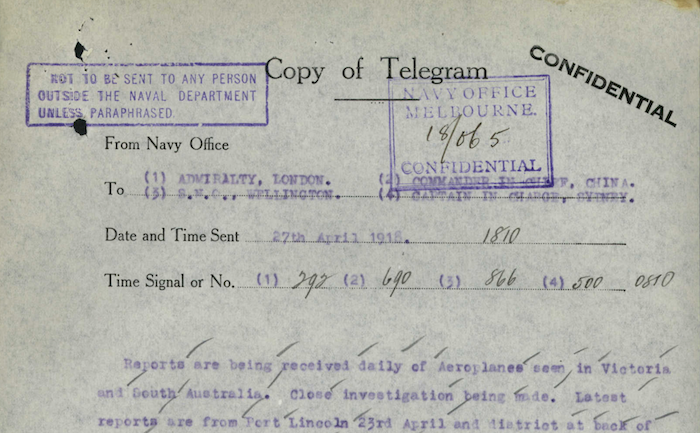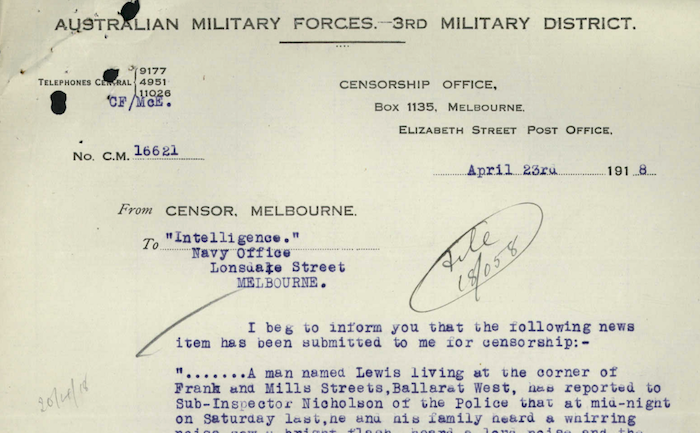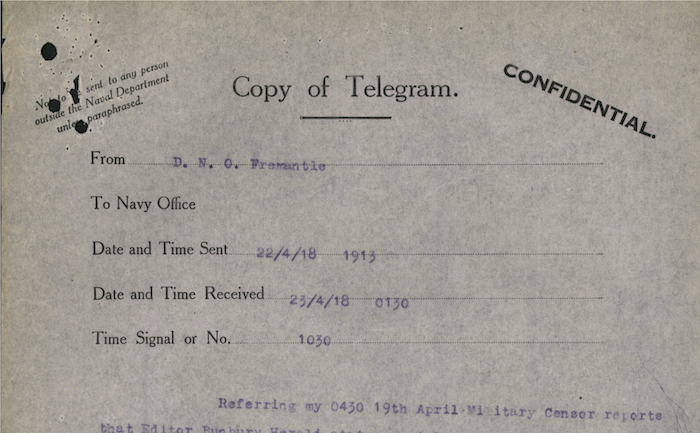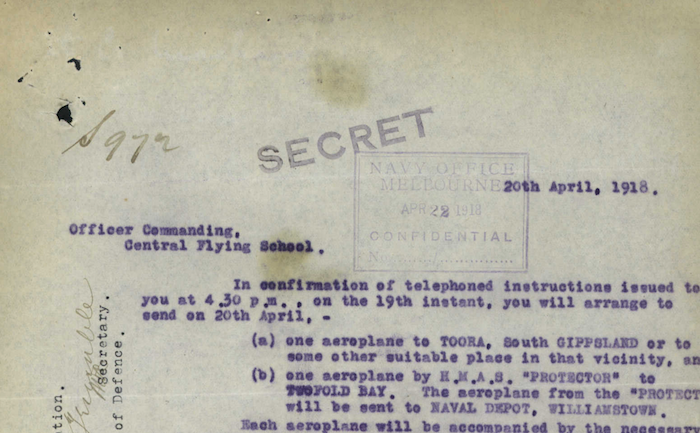Tuesday, 30 April 1918
NAA: MP1049/1, 1918/066, pages 491 and 492 is a letter from Major E. L. Piesse, Director of Military Intelligence, to the Navy Office, informing them of the progress of the Army’s aerial reconnaissance of south Gippsland. Unfortunately, The aeroplane used in this reconnaissance has been unserviceable since 24th inst. No information has yet been received […]











